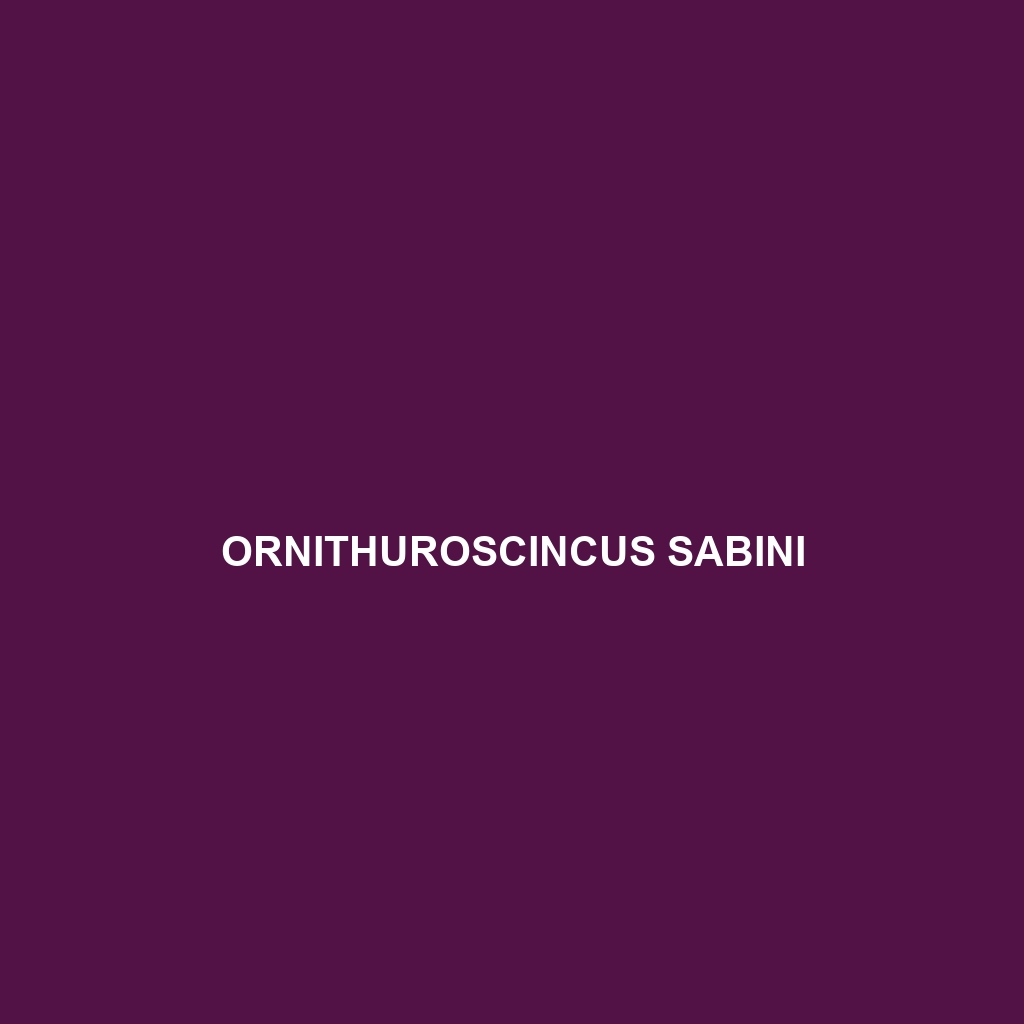Common Name
Ornithuroscincus sabini
Scientific Name
Ornithuroscincus sabini
Habitat
Ornithuroscincus sabini, commonly known as Sabin’s Skink, is primarily found in tropical rainforests and adjacent ecosystems across the island of New Guinea and parts of surrounding islands. This species prefers humid, shaded microhabitats where ample leaf litter provides both nourishment and cover from predators. The distinct wet climate of the region, characterized by significant annual rainfall and relatively stable temperatures, supports the diverse plant life that is essential for the skink’s survival. Additionally, Ornithuroscincus sabini can occasionally be found in other habitats such as subtropical or temperate forests, making it adaptable to various environmental conditions. Understanding its habitat preferences is critical for conservation efforts and habitat management.
Physical Characteristics
Sabin’s Skink showcases an array of physical features that set it apart from other lizard species. Typically, the adult skink reaches about 8 to 12 inches in length, with a sleek, elongated body that facilitates movement through dense underbrush. The coloration predominantly varies from bright green to dark brown, often with a distinctive pattern of lighter spots or stripes that enhance camouflage among the foliage. Additionally, Ornithuroscincus sabini possesses smooth, shiny scales and a long, tapering tail that plays a role in balance and agility. Its limbs are short but sturdy, allowing for quick movements across ground surfaces and trees. These adaptations make it an attractive subject for herpetologists and enthusiasts alike.
Behavior
The behavior of Ornithuroscincus sabini exhibits intriguing patterns that capture interest among researchers. This skink is primarily diurnal, actively foraging for food during daylight hours. Its social structure is somewhat solitary, although individuals may be spotted basking in groups among the leaf litter. Notably, Ornithuroscincus sabini has been observed displaying territorial behaviors, especially during the mating season when males engage in elaborate courtship displays. Some of these behaviors include head bobbing, color variation, and circling, all intended to attract females or ward off rival males. Additionally, it demonstrates excellent climbing skills, often scaling trees and shrubs to evade predators or search for food.
Diet
Ornithuroscincus sabini is primarily an insectivore, feeding on a variety of small invertebrates such as ants, beetles, and termites. Its diet may also include other organic matter, indicating some degree of omnivorous behavior; however, the majority of its nutritional intake derives from protein-rich insects. The skink employs its keen sense of smell and agile movements to capture prey, often foraging among leaf litter or beneath loose bark. Understanding its feeding habits provides insight into its role in the ecosystem, contributing to the control of insect populations.
Reproduction
The reproductive cycle of Ornithuroscincus sabini is characterized by a seasonal pattern, typically occurring during the wet season when resources are abundant. Mating usually takes place in early spring, with males competing for the attention of females through elaborate displays. After a gestation period of about two to three months, females lay clutches of up to ten eggs in hidden nests constructed in moist, soft soil or rotting vegetation. Post-hatching, the young skinks are independent and receive no parental care. The reproductive success of this species is closely tied to the health of its rainforest habitat, as a loss of suitable nesting sites could significantly impact population dynamics.
Conservation Status
According to the International Union for Conservation of Nature (IUCN), Ornithuroscincus sabini is currently classified as vulnerable. The deterioration of its natural habitat due to logging, agriculture, and urbanization poses significant threats to its populations. Conservation efforts are focused on habitat protection and restoring degraded regions to ensure the survival of this species. Public awareness campaigns and research initiatives are also in progress, highlighting the importance of preserving not only this skink but the biodiversity of New Guinea’s rainforests at large.
Interesting Facts
One fascinating aspect of Ornithuroscincus sabini is its ability to change color based on environmental conditions, which serves both as camouflage and a means of thermoregulation. In addition, the skink’s tail can regenerate if lost, an adaptation that is vital for escaping predators. This remarkable regeneration ability has made the species a subject of interest in scientific studies regarding evolutionary biology and resilience.
Role in Ecosystem
Within its ecosystem, Ornithuroscincus sabini plays a critical role as both a predator and prey. It helps maintain the balance of insect populations, contributing to the health of its rainforest habitat. Additionally, it serves as a food source for larger predators, including birds of prey and snakes. By being an integral part of the food web, the skink supports nutrient cycling and maintains ecological balance, underscoring its importance as a keystone species in its native environment.
